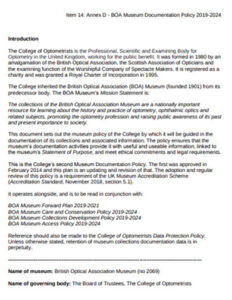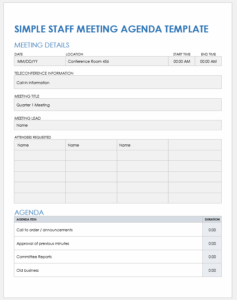Imagine unearthing a piece of the past – a delicate shard of pottery, a tarnished coin, a forgotten tool. The thrill of discovery is undeniable, but what comes next? How do you ensure that this artifact, a tangible link to history, is properly recorded, preserved, and understood for generations to come? That’s where a comprehensive system comes into play, and at the heart of that system is a clear, well-organized, and easy-to-use framework to capture all relevant details.
Think of it as giving a voice to the voiceless. An artifact cannot speak for itself; it relies on us to tell its story. We need to meticulously document its physical characteristics, its provenance (where it was found), its context (what was happening at that time and place), and its significance (what it tells us about the past). This documentation isn’t just for academics; it’s for anyone who wants to learn about history, appreciate the cultural heritage, and understand the human story.
Creating a historical artifact documentation template is the first step in ensuring that these treasures are not lost to time. It provides a standardized approach to record keeping, making it easier for researchers, museum curators, and even amateur enthusiasts to organize and share information. It’s about creating a shared language for understanding and preserving our collective past. This guide will walk you through the essential elements of a useful documentation system.
Why is Detailed Documentation of Historical Artifacts Essential?
Detailed documentation is the bedrock of artifact preservation and scholarly research. Without it, objects lose their context, their stories fade, and their value as historical resources diminishes. Think of it like a detective story. Each piece of information you gather – the artifact’s size, its material, its location, even the soil it was found in – is a clue that helps you unravel the mystery of its past. A historical artifact documentation template helps organize these clues.
Consider the implications of inadequate documentation. Imagine a beautiful ancient vase discovered during an excavation. If the location of the vase is not precisely recorded, we lose valuable information about its cultural context. Was it found in a royal tomb, a common household, or a religious site? The answer to that question drastically changes our understanding of its significance. Lack of proper recording jeopardizes proper conservation.
Beyond context, detailed descriptions of the artifact’s condition are crucial for conservation efforts. Recording existing damage, signs of wear, and previous repairs allows conservators to make informed decisions about the best way to preserve the object for the future. These details are vital as different methods are deployed for distinct materials and existing conditions. A thorough historical artifact documentation template is key in providing conservators all the data that is needed.
Furthermore, accurate documentation facilitates research and collaboration. By having a standardized framework, researchers from different institutions and countries can easily share information and compare findings. This collaborative approach can lead to new insights and a deeper understanding of the past. It also helps guard against misinterpretation and inaccuracies, ensuring that historical narratives are based on sound evidence.
Ultimately, detailed documentation is about respecting the past and ensuring that it remains accessible to future generations. By meticulously recording every detail, we honor the people who created these artifacts and the cultures they represent. We also empower future researchers and enthusiasts to continue the work of understanding and interpreting our shared history. It is our duty to safeguard historical evidence with care and rigor. Therefore, a reliable system, like a historical artifact documentation template, is an indispensable tool.
Key Components of a Comprehensive Historical Artifact Documentation Template
A comprehensive system for recording historical objects needs to cover several key areas to ensure a complete and useful record. The following components should be considered when designing your own historical artifact documentation template. Remember to tailor the system to your specific needs and the type of artifacts you are working with.
Object Identification: This section focuses on the basic details that uniquely identify the artifact. It should include a unique identifier (e.g., an accession number), the object’s common name (e.g., “pottery shard,” “bronze coin”), and a brief description of its function (e.g., “storage vessel,” “currency”). A clear and concise description is crucial for differentiating it from other objects. Consider adding details of where the object is stored too.
Physical Description: This section captures the artifact’s physical characteristics in detail. Include measurements (length, width, height, weight), materials (e.g., clay, metal, wood), color, and a detailed description of its shape, decoration, and any distinctive features. High-quality photographs are essential in this section. Pay attention to lighting and angles to capture the artifact accurately. Note any visible markings, inscriptions, or symbols.
Provenance: This is where you record the artifact’s history of ownership and discovery. Include the date and location of discovery (with precise GPS coordinates if possible), the name of the finder or excavator, and any known previous owners. If the artifact was purchased, record the seller’s name and contact information. The more complete the provenance information, the more valuable the artifact becomes to researchers.
Condition Assessment: This section documents the artifact’s current condition. Note any damage, deterioration, repairs, or alterations. Use standardized terminology to describe the condition (e.g., “cracked,” “chipped,” “corroded”). Include photographs documenting the condition. This information is crucial for tracking changes in the artifact’s condition over time and for planning conservation treatments.
Contextual Information: Record any relevant information about the context in which the artifact was found. This might include the type of site (e.g., burial ground, settlement, shipwreck), the associated artifacts found nearby, and any relevant historical or archaeological information about the site. This information helps to understand the artifact’s function and significance within its original cultural setting.
Significance Assessment: This section is where you articulate the artifact’s historical, cultural, scientific, or artistic significance. Explain why the artifact is important and what it tells us about the past. Consider its rarity, its connection to historical events or figures, and its contribution to our understanding of human history and culture. This section should be based on thorough research and analysis.
Ultimately, the value of any artifact lies not just in its physical form, but in the knowledge and understanding it provides. A thorough and well-maintained set of records ensures that this knowledge is preserved and accessible for generations to come. We leave a legacy of care and understanding for those who follow.
By embracing documentation practices that are careful, thorough, and mindful, we can ensure that these remnants of lives lived and cultures flourished continue to inform and inspire us. They serve as tangible reminders of our shared human experience.


